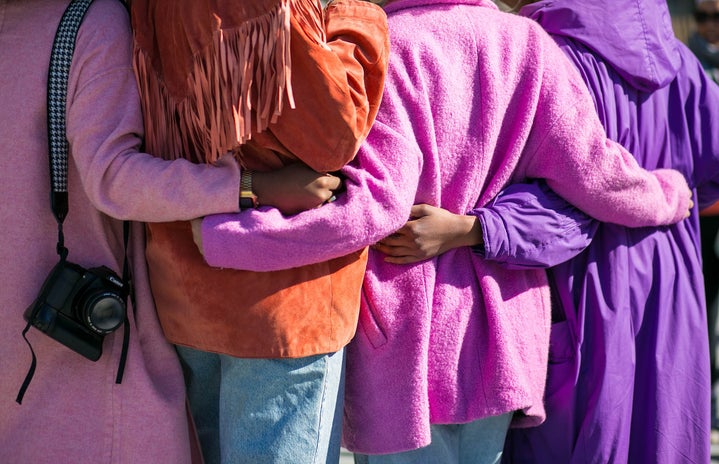A short introductory note.
Throughout history, women has been instrumental in shaping the world we live in, making remarkable contributions to fields ranging from science to literature to civil rights. However, far too often their achievements have been overshadowed by those of their male counterparts, leaving their stories to be forgotten.
As we celebrate International Women’s Day, it is important to recognize the immense impact that women have had on society and to highlight the many significant female figures in history who have been overlooked. In this article, I will be exploring some of the most prominent women whose contributions have been historically eclipsed from recognition, in a bid to shed light on the important legacies they have left behind.
- Rosalind Franklin
Rosalind Franklin was a pioneering scientist whose data collection enabled the discovery of the double-helix structure of DNA. Franklin’s most significant contribution to science was her work on X-ray crystallography, a technique that uses X-rays to determine the atomic and molecular structure of a crystal. In the early 1950s, she began working on the structure of DNA, using X-ray crystallography to generate detailed images of the molecule.
Although Franklin’s work was instrumental in uncovering the structure of DNA, she was not fully recognized for her contributions during her lifetime. Her images of the molecule, which were essential to the discovery, were shown to James Watson and Francis Crick without her knowledge or consent, and they went on to publish a paper on the structure of DNA that did not credit Franklin. Despite this, Franklin continued to make important contributions to science throughout her career. She went on to work on the structure of viruses, including the tobacco mosaic virus, and helped to establish the field of structural virology.
Today, Franklin is widely recognized as a pioneering scientist whose work was essential for numerous discoveries in molecular biology and genetics. Her story is a reminder of the importance of recognising and valuing the contributions of women in science, and the potential for anyone – regardless of their background of identity – to make fundamental contributions to understanding the world around us.
- Mary Anning
Mary Anning was a pioneering palaeontologist who made several significant discoveries in the field of palaeontology in the early 19th century. Anning’s most significant discoveries include the first complete ichthyosaur fossil ever found, as well as the first plesiosaur fossil. These discoveries challenged the prevailing scientific beliefs of the time and helped to establish the field of palaeontology as a legitimate scientific discipline. Her contributions to the field of palaeontology helped to shape our understanding of prehistoric life and have inspired countless scientists and researchers in the centuries since her death in 1847.
Despite her significant contributions to the field of palaeontology, Anning faced significant challenges in her career due to her gender and social class. As a woman from a working-class background, she was often overlooked and marginalized by the scientific community, and was not eligible to join scientific societies or attend scientific meetings. Her story serves as a powerful reminder of the importance of diversity and inclusion in science and other fields. Her legacy is celebrated through events such as Mary Anning Day, an annual celebration of her life and achievements that takes place in her hometown of Lyme Regis.
- Ada Lovelace
Ada Lovelace was a pioneering mathematician and computer scientist who is often credited with writing the world’s first computer program. Lovelace’s most famous work was her collaboration with the inventor Charles Babbage on his “analytical engine,” a proposed mechanical calculator that is considered to be the precursor to modern computers. Lovelace was intrigued by the potential of the analytical engine and wrote a series of notes and observations that included a step-by-step algorithm for calculating a sequence of numbers, making her the world’s first computer programmer.
Lovelace’s work was ahead of its time, and it would be many years before her ideas were fully appreciated. In the years following her death in 1852, Lovelace’s notes and writings were largely forgotten, and it was not until the mid-20th century that her contributions to computer science began to be recognized. Lovelace is an inspiration for women and girls around the world, demonstrating the potential for women to make ground-breaking contributions in STEM fields. Her legacy continues to be celebrated through events such as Ada Lovelace Day, an annual celebration of women in STEM fields that takes place in October.
- Katherine Johnson
Katherine Johnson was a mathematician and scientist who worked at NASA during the Space Race era in the 1960s. she was part of a team of “human computers”, a group of women who performed complex mathematical calculations by hand to support the early space missions. Johnson’s work was instrumental in calculating the trajectories for several historic space missions, including the first human spaceflight by Alan Shepard in 1961, the first American orbital spaceflight by John Glenn in 1962, and the Apollo 11 mission that landed humans on the moon in 1969. Her precise calculations and attention to detail helped to ensure the safety and success of these missions.
Johnson faced much discrimination and segregation as an African American woman working in a male-dominated field; thankfully her contributions to the early space programme were later recognized and celebrated. In 2015, she received the Presidential Medal of Freedom for her pioneering work in mathematics and her instrumental role in the success of NASA’s early space missions. Johnson’s legacy continues to inspire women in STEM fields, and her story was brought to a wider audience in 2016 with the release of the movie Hidden Figures. The movie told the story of Johnson and the fellow women in the “human computers” team.
- Ida B. Wells
Ida B. Wells was an African American journalist, suffragist, and civil rights activist. Wells is best known for her investigative journalism into the lynchings of African Americans, which she documented in her newspaper, the Memphis Free Speech and Headlight. She was a fearless and outspoken critic of lynching, and her reporting helped to expose the horrific violence and injustice faced by African Americans in the late 19th and early 20th centuries.
In addition to her journalism, Wells was also a prominent activist for women’s suffrage and was a founding member of the National Association for the Advancement of Coloured People (NAACP). She was a vocal advocate for civil rights and worked tirelessly to improve the lives of African Americans, both in the United States and abroad.
Today Wells can be remembered as a pioneering journalist, activist, and advocate for civil rights and social justice, paving the way for future generations of African American activists and journalists and remains an inspiration for those who continue to combat racism and inequality.
Concluding thoughts
These are just some of the many women in history who have made significant contributions but have not received the recognition they deserve. As we celebrate International Women’s Day, it’s important to remember the achievements of these remarkable women and to work towards a world where women’s contributions are celebrated and valued. We can honour their legacy by continuing to fight for gender equality and creating a more inclusive and equitable society for all.


